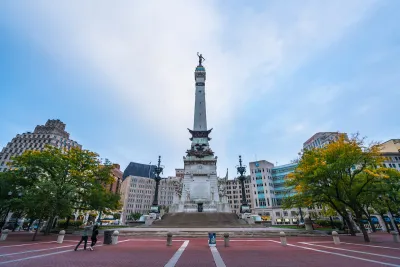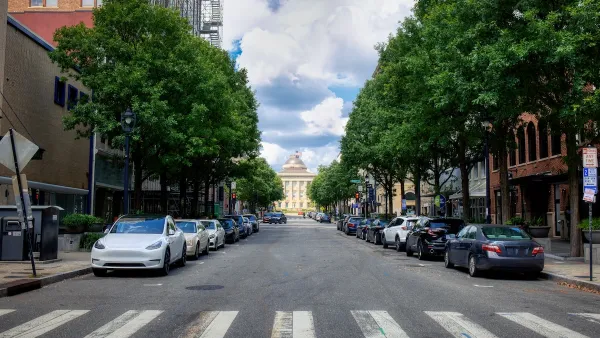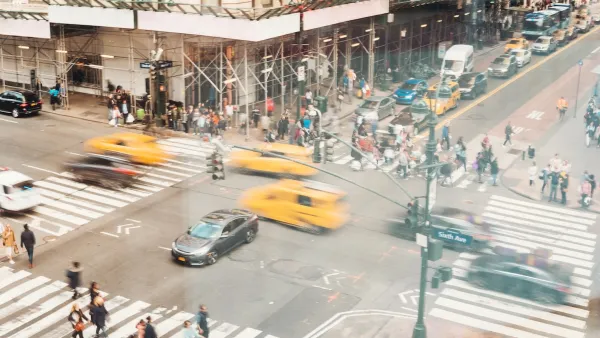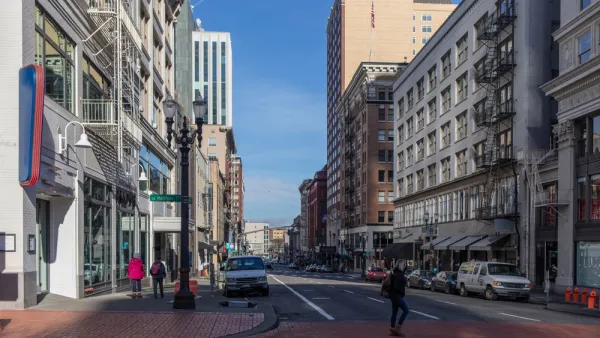As of now, the city lacks a dedicated funding source for pedestrian safety efforts.

Indianapolis could join other cities in developing a Vision Zero plan as part of an effort to stem rising pedestrian deaths, reports Nadia Scharf in the Indianapolis Star.
According to Scharf, “A Vision Zero plan has been on the table for nearly a decade. Now, several city-county council members plan to present a proposal in July and the city has sent out a request for proposals for a study that would examine how a Vision Zero plan could operate in Indy.”
The strategy requires collaboration between various city departments and nonprofits and will likely include infrastructure improvements such as bike lanes, curb extensions, and crosswalks. The proposed Vision Zero bill “will set a timeline goal to see results, create and define an oversight committee to keep efforts on track towards that goal, and set requirements for the first draft of an action plan.”
According to Scharf, Indianapolis faces a disadvantage when it comes to transportation funding: because the state allocates funding based on road miles rather than lanes or vehicle throughput, there is no dedicated funding source for Vision Zero to date. “It’s unclear what changes led by a Vision Zero plan might look like in Indianapolis, but advocates and policymakers alike agree: something needs to change to make Indy streets safer.”
FULL STORY: Indy is in a 'pedestrian safety crisis.' Can a Vision Zero traffic safety plan save lives?

National Parks Layoffs Will Cause Communities to Lose Billions
Thousands of essential park workers were laid off this week, just before the busy spring break season.

Retro-silient?: America’s First “Eco-burb,” The Woodlands Turns 50
A master-planned community north of Houston offers lessons on green infrastructure and resilient design, but falls short of its founder’s lofty affordability and walkability goals.

Delivering for America Plan Will Downgrade Mail Service in at Least 49.5 Percent of Zip Codes
Republican and Democrat lawmakers criticize the plan for its disproportionate negative impact on rural communities.

Test News Post 1
This is a summary

Test News Headline 46
Test for the image on the front page.

Balancing Bombs and Butterflies: How the National Guard Protects a Rare Species
The National Guard at Fort Indiantown Gap uses GIS technology and land management strategies to balance military training with conservation efforts, ensuring the survival of the rare eastern regal fritillary butterfly.
Urban Design for Planners 1: Software Tools
This six-course series explores essential urban design concepts using open source software and equips planners with the tools they need to participate fully in the urban design process.
Planning for Universal Design
Learn the tools for implementing Universal Design in planning regulations.
EMC Planning Group, Inc.
Planetizen
Planetizen
Mpact (formerly Rail~Volution)
Great Falls Development Authority, Inc.
HUDs Office of Policy Development and Research
NYU Wagner Graduate School of Public Service





























